Venice Carnival celebrations and history are unique in their spectacular display, traditions, and wardrobe. Although other Italian cities also celebrate Carnival, the Venice Carnival is special—the most popular and elaborate of all. Hallmarks of Carnivals are masks, parades, shows, and parties. One of the most intriguing aspects of the Venice Carnival is its masks, which have a history of their own.
Because of its beauty and centuries-old traditions and history, the Venice Carnival stands as one of the most fascinating events in the world. Keep reading to open an intriguing window onto the lives of your Venetian ancestors.
Quick Links
- What Date Is the 2025 Venice Carnival?
- Venice Carnival History
- Venice Carnival Revived After 200 Years
- Venetian Masks—Hints of Mystery
- The Art of Mask Making
- What Happens at the Carnival of Venice?
- Find Your Venetian Ancestor
- More Resources
What Date Is the 2025 Venice Carnival?
The spectacular Venice Carnival lasts for about two weeks. Carnival dates change every year, but range from the end of January to early March. The Venice Carnival 2025 dates are February 22 to March 4. Any day of the carnival will be packed with fun events. Look for the schedule of events on the official Carnival website to plan out a fantastic two-week party.
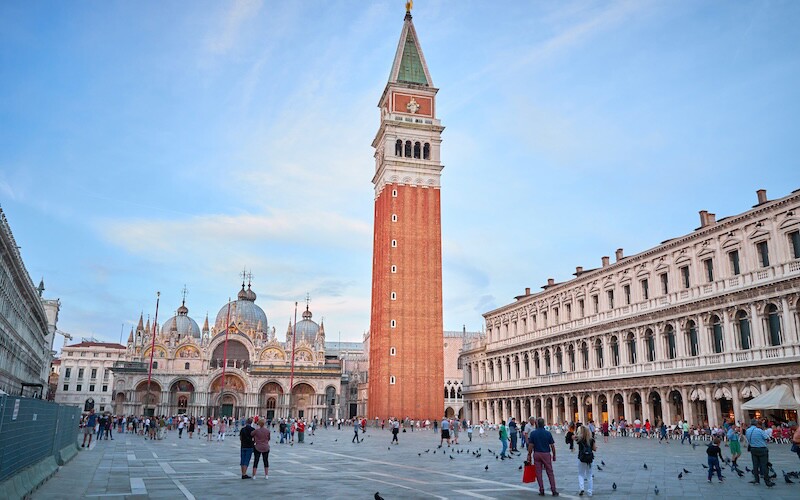
Venice Carnival History
The Venice Carnival has a long history, dating back at least to the 12th century. Of the many reasons to throw a party in Venice, the earliest reason was probably a celebration of freedom.
In 1162, the Venice Republic defeated Ulrich of Aquileia when he tried to make Venice part of the Holy Roman Empire. The victorious Venetians took Ulrich prisoner and destroyed his castles. When the Pope intervened, Ulrich was released in exchange for yearly payment to Venice of a bull, 12 pigs, and 300 loaves of bread. Venetians cooked and ate this booty in a public ceremony in St. Mark’s Square, dancing and feasting for hours. Thus began the public feasting and dancing that has remained part of Carnival for hundreds of years.
What Catholic Meaning Did the Venice Carnival Have?
Although Italian Carnivals may have sprung from ancient Greek and Roman celebrations of spring, the Catholic Church changed the meaning of Carnival as Christianity spread throughout the Mediterranean, fitting Carnival into Catholic rituals. In the Catholic tradition, Carnival is celebrated before the start of Lent, which is a 40-day period of fasting and sacrifice before Easter. Carnival was a chance to eat, drink, and be merry before the sacrifices required during Lent.
The Italian word carnevale comes from the Latin carne vale, which means “farewell to meat.” During the two-week Carnival period, Venetians could splurge on meat and loose their inhibitions before Lent. Lent starts on Ash Wednesday and ends on Holy Thursday, and is the time after Carnival when Venetians traditionally ponder their lives, repent, and prepare for Easter.
Venice Carnival during the Renaissance
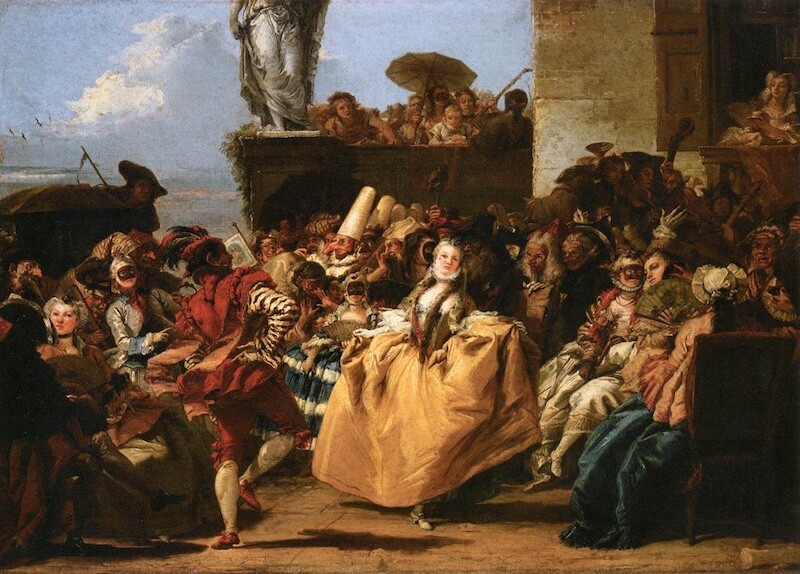
Carnival was popular through the Middle Ages and into the Renaissance. A 1296 proclamation by the Venetian Senate is the oldest written evidence of the Venice Carnival. It announced a public festival before the start of Lent.
During the Renaissance, masked performers entertained in the city squares, where people of all standings and beliefs mingled to eat, dance, parade, perform, and enjoy themselves, often in anonymity behind masks. The popularity of Venice Carnival likely peaked in the 17th and 18th centuries, when the elaborate and almost mystical festivities, clothing, and masks brought people from all over Europe.
Venice Carnival Revived after 200 Years
However, Venice Carnival was outlawed in 1797 by the Holy Roman Emperor, Francis II. Why was the Carnival of Venice banned? Frances II thought political enemies were organizing behind the carnival masks. The government feared that its enemies were conspiring an overthrow, and banned carnivals and masks altogether.
Banning Venice Carnival reduced the number of large gatherings, and banning masks made it illegal for Venetians to hide their identities. Because of the Italian Carnival’s untamed history, Venice did not welcome the Carnival traditions back into their culture for almost 200 years.
Finally, in 1979, government and citizen groups seeking to bring new life to Italian culture and tourism revived Carnival festivities. Today, the sparkling Venice Carnival draws tourists from all over the world, and for two weeks in February and March Venice becomes a large stage where everything seems possible, with total anonymity.
Venetian Masks—Hints of Mystery
The famous Venetian masks are a central part of the Venice Carnival. These over-the-top-beautiful and imaginative creations—many hand-crafted—are everywhere, adding mystery and a touch of magic. It is no wonder the Venice Carnival has resurfaced with its original mystique. Although the masks are stunning to look at, beauty is not their only purpose.
Venetians wore masks at the Venice Carnivals to hide their identities. Most aristocrats didn’t want the public to recognize them and assume they were party-goers or associating with non-aristocrats. Behind their masks, Venetians of all social classes could mingle on an equal basis.
Consequently, many Venetians didn’t just wear masks at Carnival, but whenever they went out during a certain time of the year. Traditionally, masks were allowed only between St Stephen’s Day (December 26) and Shrove Tuesday, the end of the Carnival. Sometimes local leaders also allowed masks from October 5 through Christmas, so people could be disguised for a large part of the year.
During mask season, Venetians seemed to have a mask for every occasion. Plain white or black every-day masks could be exchanged for vibrant masks for special occasions. The most popular masks among Venetians were known as carnival masks and commedia dell’arte masks. In commedia dell’arte, a theatre comedy dating back to 1545, masks were used to represent certain characters and stories.
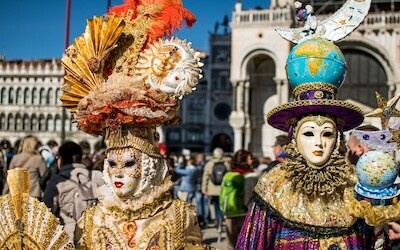

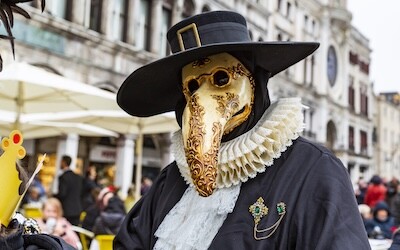
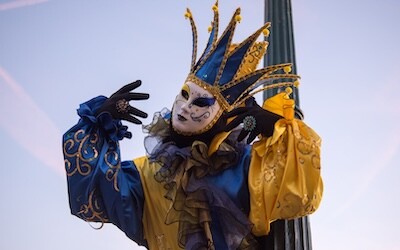
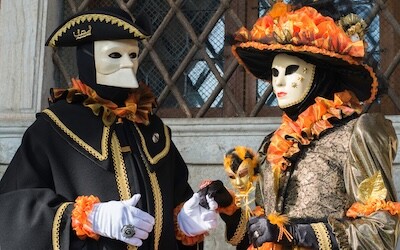
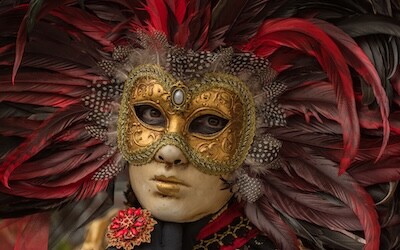
The Art of Mask Making
In the early years of mask making, the task was an esteemed art. Venice mask-makers (mascherari) were held in great respect and had their own guild. They made elaborate carnival masks out of glass, porcelain, leather, or papier mâché. The designs were always colorful and unique. Gold leaf, real gems, feathers, lace, and other costly materials were often added.
Today, masks are mostly made from papier mâché or plastic, and taken from a clay or plaster cast that can be used over and over. With modern techniques, masks are much easier to construct. Once the basic mask is dry and the eye holes or other facial features are cut or formed, the mask is painted and decorated. The painting alone can be a delicate and lengthy process, involving many different paintbrushes and colors.
Over the centuries, mascherari have had many trade secrets, adding to the mystique and fun of owning a mask. Choosing or decorating a carnival mask is a great way to connect with Venice culture.
What Happens at the Carnival of Venice?
Hundreds of activities make up the Venice Carnival—from public parades to private parties, from street theater and opera to just watching people go by. Venetians dress up in fancy attire and elaborate masks to celebrate, while many tourists are happy just to observe the spectacle. Tourists traveling to Venice during the Carnival season can participate in parades, masked parties, and gondola boat rides, to name just a few of the options.
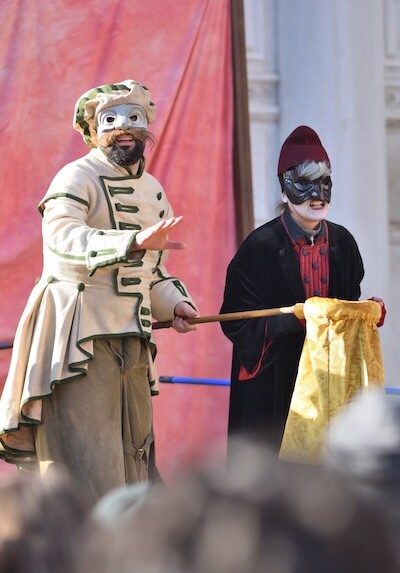
Parades and Street Shows
Venice Carnival includes many parades and street shows that feature traditional Venetian costumes and masks. Check the official Venice Carnival website for the time and place of various parades and shows.
Events include The Best Mask Contest, the Carnival Costumes Show, the Carnival Water Parade, circus theater and acrobatics, and the Feast of the Maries, a beauty pageant and parade that dates all the way back to the 9th century. Treasure hunts, concerts, balls, and dinner cruises are just a sampling of other events on the schedule.
Masked Parties
Countless parties and gatherings entertain visitors throughout Venice during the Venice Carnival season. Some of these are private, including masquerade balls, that have a dress code and are by invitation only or charge an entrance fee, which can be high.
There are also public parties and events in St. Mark’s Square and other piazzas around the city, which are free or low-cost. Whether you go private or public, the dress of the day is 18th-century finery for both men and women, including high-ruffed collars and bouffant sleeves. And, of course, a mask.
Gondola Rides
Gondola boat rides on the Grand Canal are one of the biggest attractions in Venice. They are twice as fun during the weeks of Carnival. Whether you’re viewing the revelers in the boats or are part of the show yourself as a passenger, gondola rides are a charming way to absorb the Carnival atmosphere. The rides can be private or shared, with or without music.
Some gondolas cater to families, with the gondolier telling stories and singing songs to delight the whole family. Rates vary by length, time of day, and number of persons, and can be high. Another much-cheaper option for waterway travel is the traghetto, a larger canal boat, like a city bus.
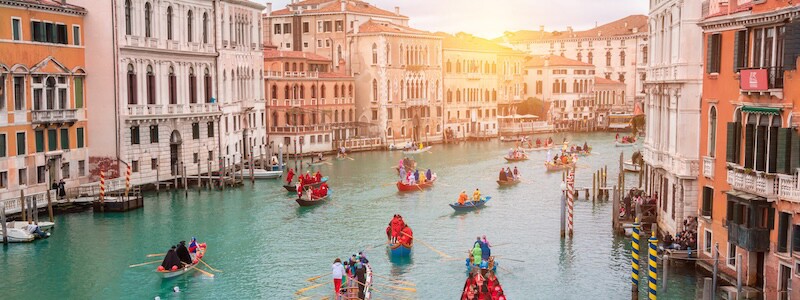
Find Your Venetian Ancestors
The Venice Carnivals are full of fun and laughter. The history of the Carnival embraces the Venetians’ love for masked parties and parades. Woven into the festivities are remnants of Venetian history dating from the Middle Ages, as well as art and music revered to this day. Learning about historical events your ancestors may have taken part in is a fascinating way to trip through time, seeing what they saw.
You can begin your trip to the Venice Carnival—whether it is actual or virtual—at FamilySearch, a free, nonprofit site that can help you take what you know about your family and dive deeper into the lives of your ancestors. The shared family tree helps you see what is already known about your family lines. It can also fix your ancestors’ lives in context with other historical events—all for free.
More Resources
- https://www.metmuseum.org/toah/hd/comm/hd_comm.htm
- https://carnevale.venezia.it/
- https://www.visit-venice-italy.com/carnival-venice-italy-programme.html
- https://lauramorelli.com/how-venetian-carnival-masks-are-made/
- https://www.familysearch.org/en/blog/italian-records-genealogy-research
Related Articles
At FamilySearch, we care about connecting you with your family, and we provide fun discovery experiences and family history services for free. Why? Because we cherish families and believe that connecting generations can improve our lives now and forever. We are a nonprofit organization sponsored by The Church of Jesus Christ of Latter-day Saints. To learn more about our beliefs, click here.






